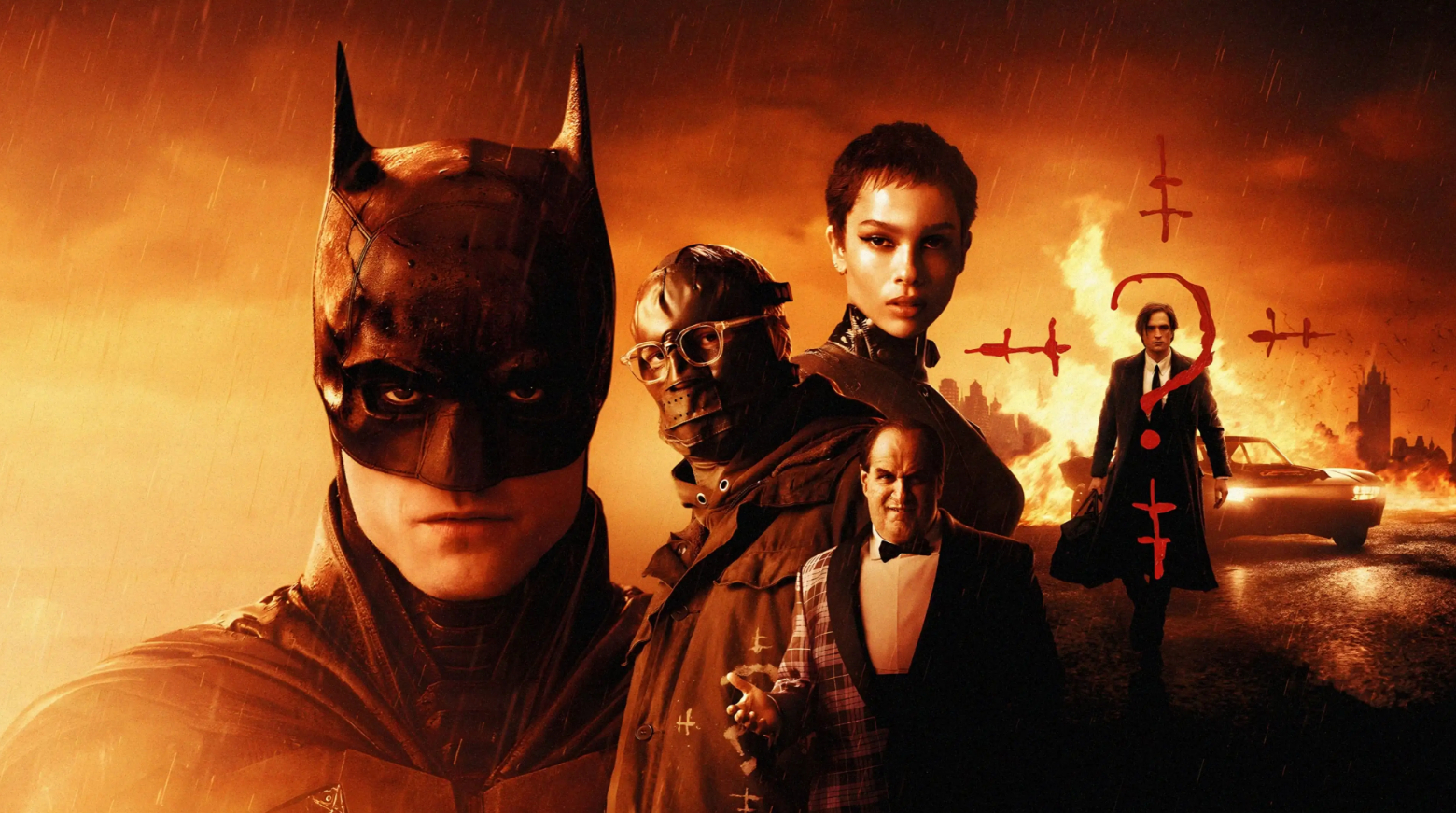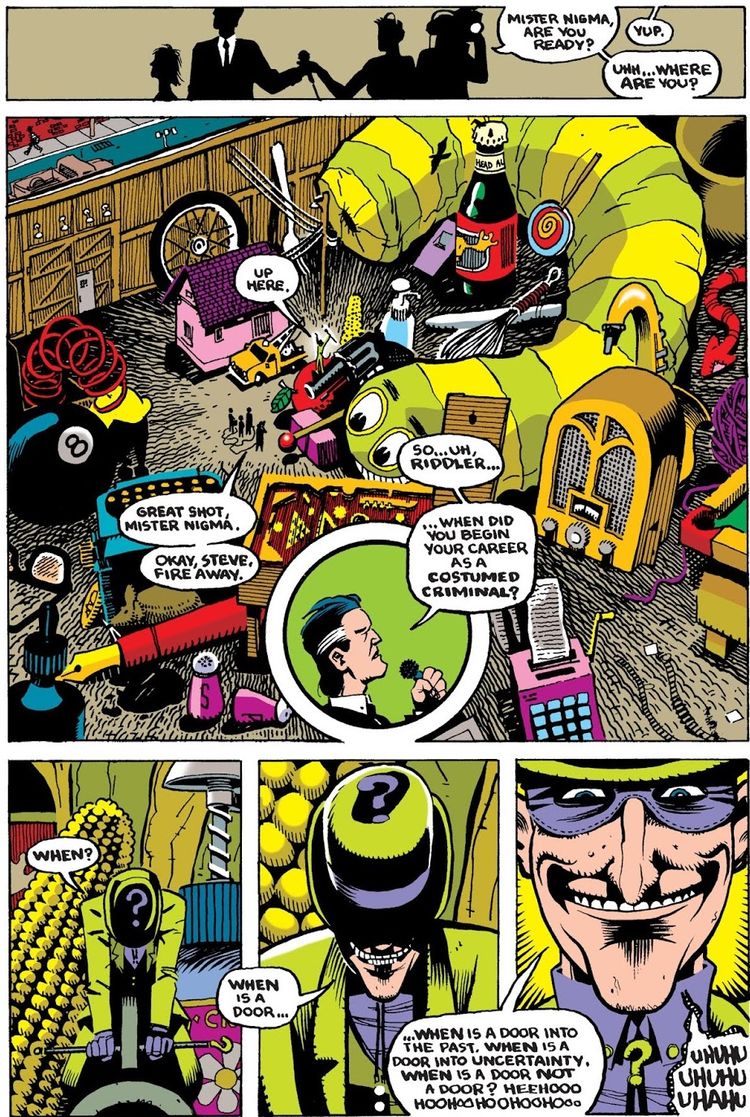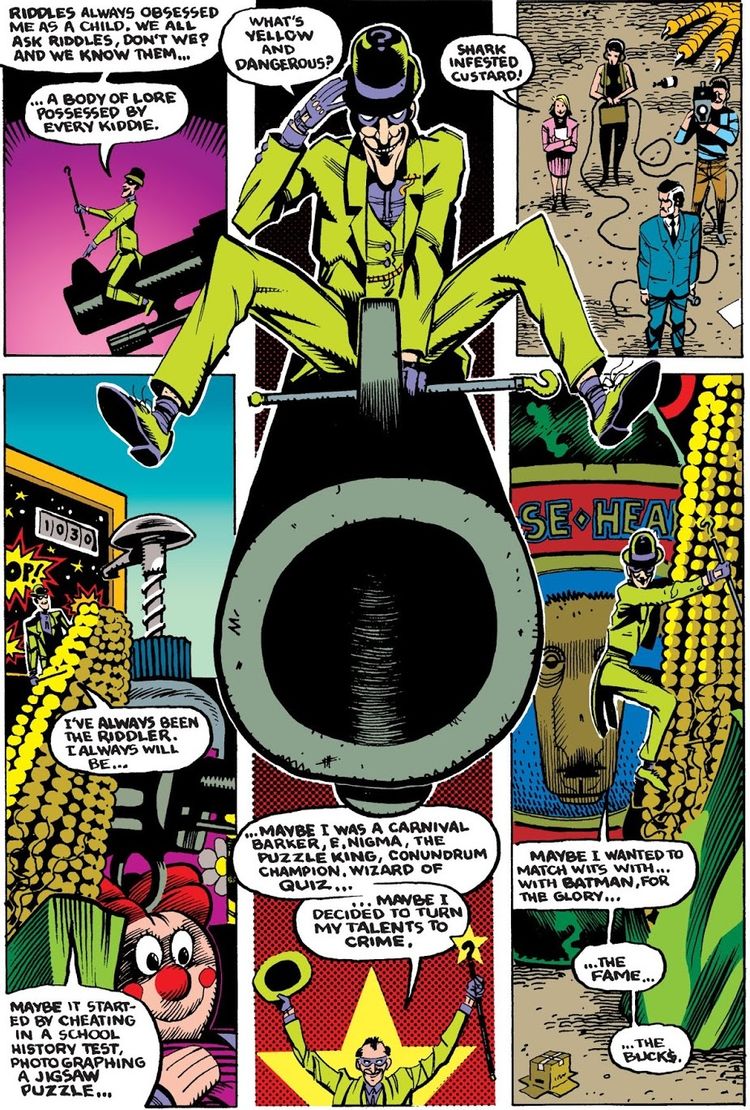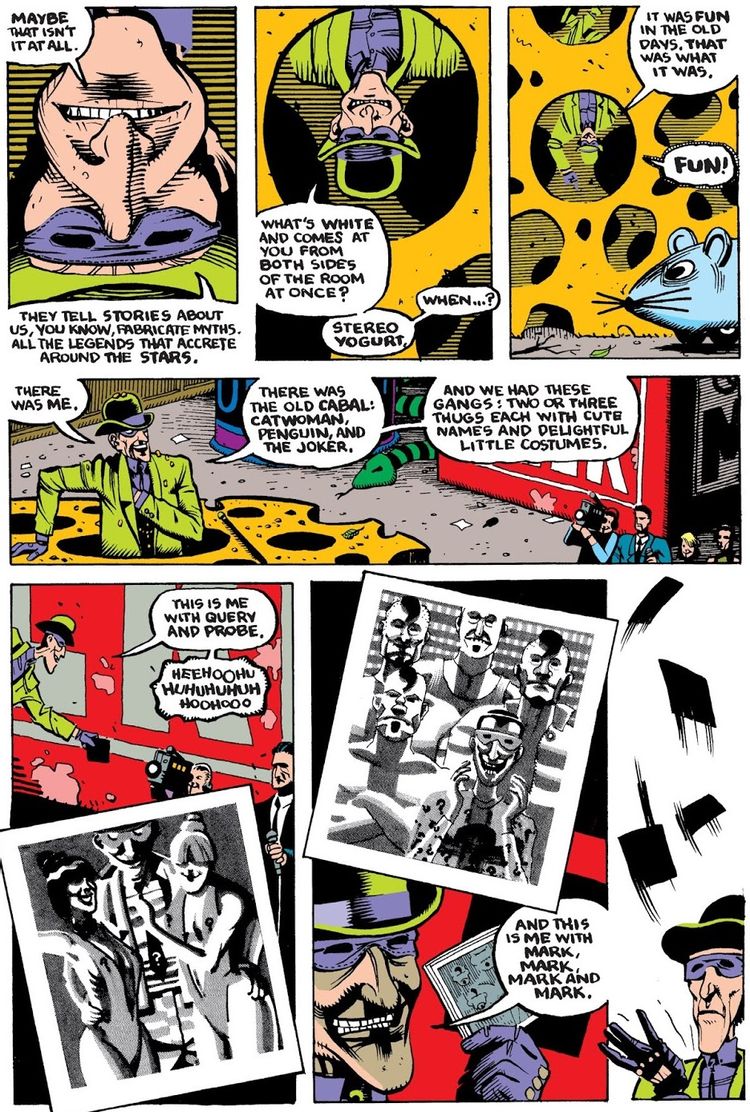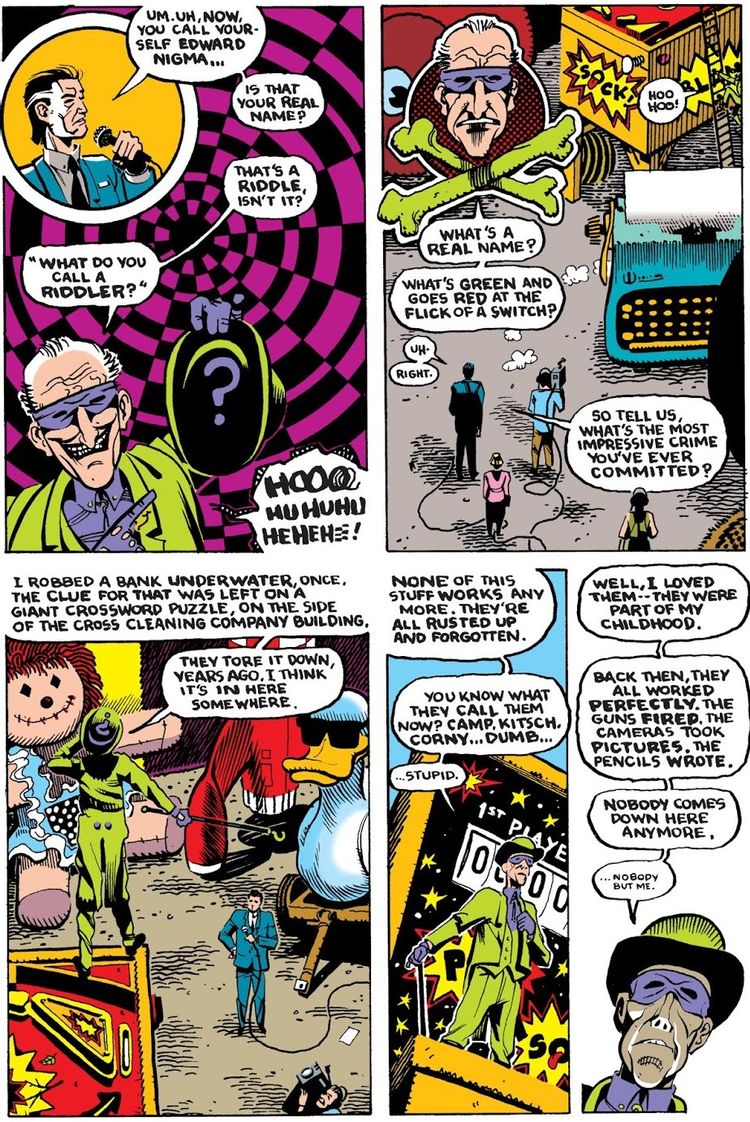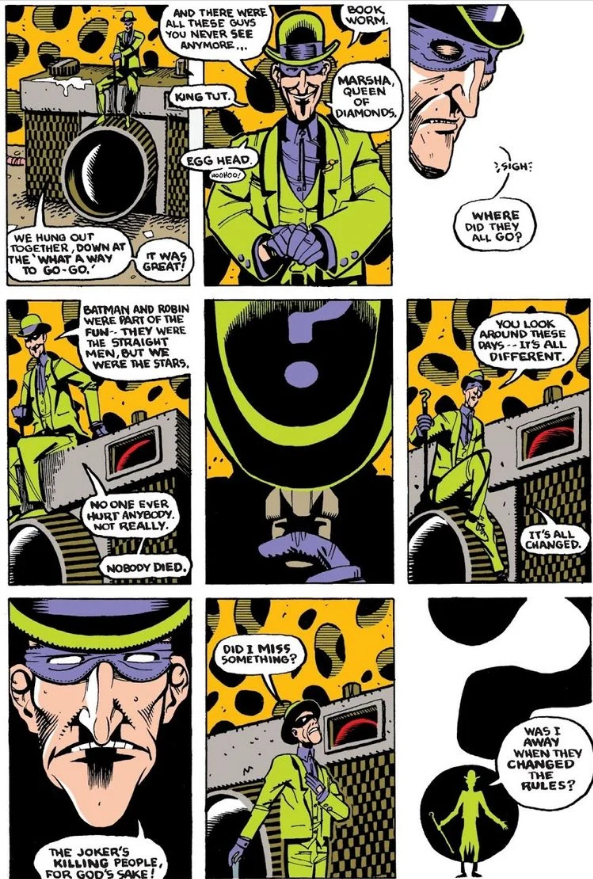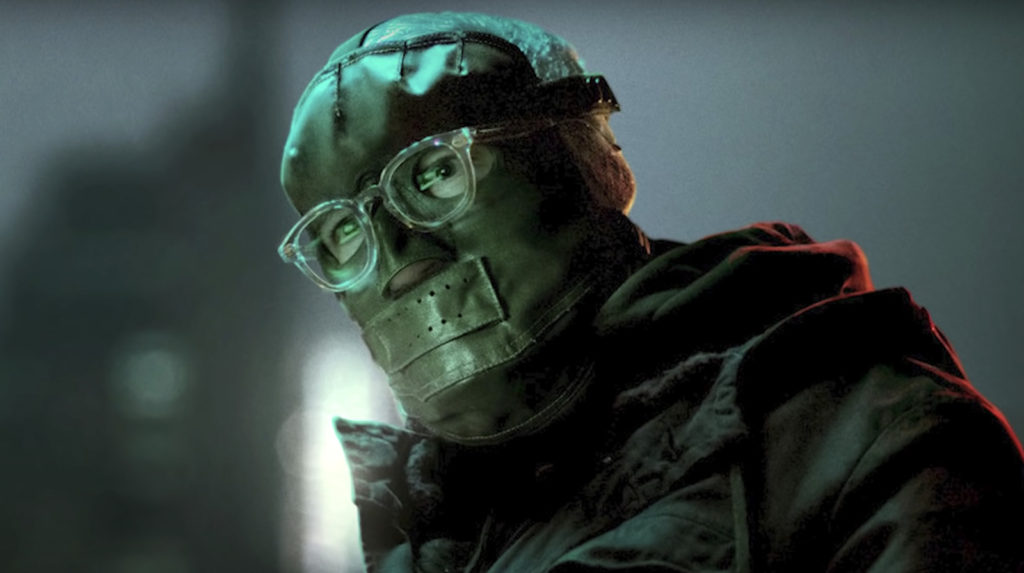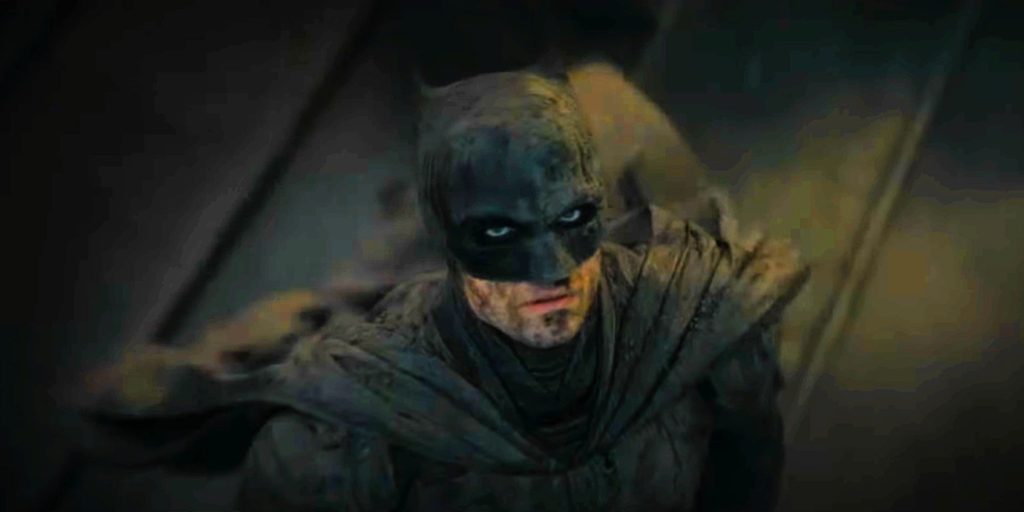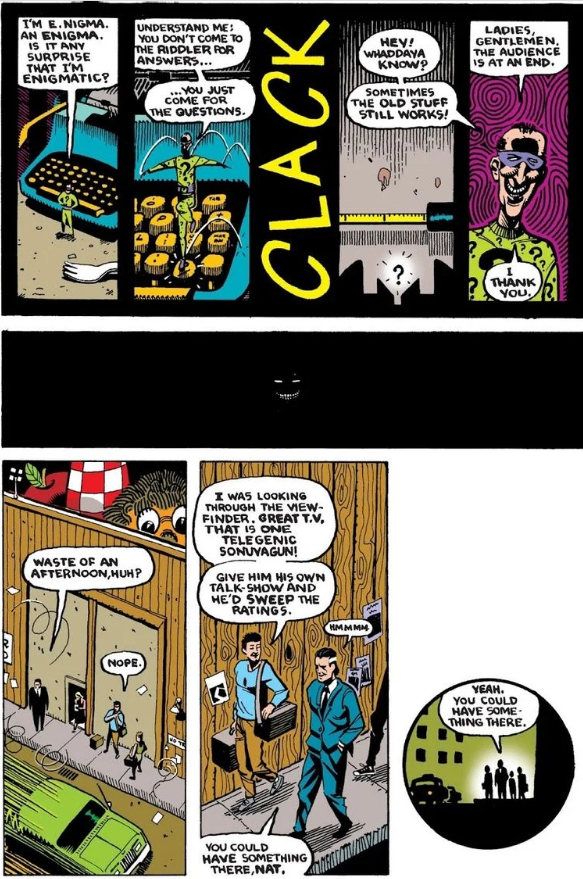In 1989, at the height of Bat-Mania, following in the wake of Tim Burton’s original Batman film, DC comics released Secret Origins Special featuring spotlight stories touching on the origins of popular Gotham villains; The Penguin, Two-Face, and The Riddler. The Riddler’s story, written by then up-and-coming author Neil Gaiman, illustrated by Matt Wagner and Joe Matt, has a TV reporter interviewing Gotham’s greatest villains and asking Edward Nigma about his views on villainy.
Surrounded by enormous props that reference famous Batman stories of decades past, the Riddler gives no straight answers, only more questions, and recalls how things used to be. He Reminisces about times when he used to hang with other Adam West style villains at Go-Go clubs, and everyone had themed hoodlums in little outfits. He delights at the game of it all, the happy-go-lucky attitude they all used to have.
The Riddler laments: “No one ever really hurt anyone, not really. Nobody DIED.”
Swiftly, Nigma breaks, recalling how things have changed. It’s all become darker.
From our perspective, we know why. Alan Moore’s deconstructive Watchmen and Frank Miller’s violent Dark Knight Returns had completely changed how comics were seen. No Longer were they a means of escapism, instead, they were a celebration of ‘adult’ ideas like violence, grit, and grimness.
To the Riddler, the world has gone on without him:
“You look around these days – – It’s ALL DIFFERENT. It’s all changed.
The Joker’s KILLING people, for God’s sake!
Did I MISS something?
Was I AWAY when they CHANGED the RULES?”
Put a pin in that. We’ll come back to it later.
So, Matt Reeves’ The Batman.
The rebirth of the Batman film franchise, the 2022 offering gives us Robert Pattinson as a young journeyman Batman. He’s been around two years, so, no need for an origin story. Instead, he’s a moody young man who considers his purpose to be vengeance. To punish evil through violence and investigation. He doesn’t kill, but he does beat the crap out of what he considers evil. This goes to the extent that he calls himself Vengeance, which is incredibly memey but… Just wait.
When the Zodiac Killer-like Riddler begins targetting Gotham’s elite, he leaves clues, cyphers, and live streams behind him, all aimed at The Bat. The Riddler’s trail leads Bruce, through actual detective work, to the Penguin and eventually the head of Gotham’s crime syndicate Carmine Falcone. With an ambiguously moral Catwoman in tow, Batman confronts the corruption in Gotham that goes back generations. Bruce discovers truths about his family and questions whether vengeance is honestly the best reason for The Batman to exist. This is all before he finally meets the Riddler face to face and discovers what makes him tick.
The Batman is good. A film where Batman does actual detective work is already a shoo-in for a fresh new take, but it’s a lot more than just that.
The performances are stunning, from Pattinson’s confused, sad goth Bruce to Zoe Kravitz’s damaged but righteous Selina to John Turturro’s understated monster-hiding-behind-designer-shades crime-boss Carmine Falcone. The standout performance is Paul Dano, who continues to not just work with legendary actors (Day-Lewis, Turturro, Giamatti) but slowly outshines them. Dano’s Riddler is an abnormally smart man who uses his intelligence for what he is certain is a good cause. He is aware of the deaths and destruction he causes, directly or not. But to him, they are merely scribbled out workings, just outside the crossword puzzle.
Dano is clearly having fun in the role, not Jim Carrey’s levels of mugging, but Dano and Reeves have definitely been watching Frank Gorshin in the 60s series. With that energy and laugh, The Riddler leaves clues not because of a mental illness, or because he wants to get caught. The Riddler wants Batman to be on the same page as him because he believes they are the same – both are children of vengeance.
It’s a darker take on the Riddler than I usually like, but not only does Dano pull it off deftly, this take on the character represents an underlying theme of the film – Darker doesn’t mean better.
Hear me out. Batman sees himself as Vengenace, unaware of how daft it sounds or the number of times other characters mock him for it. All the dark actions in Bruce and the Waynes’ pasts had lasting side effects. Many far worse than the events themselves. We expect murders and gritty fights in dark Batman films because we’ve been conditioned to expect them. It doesn’t help that except for Lego Batman and Batman and Robin, we have only had dark Batman films since 1989. Here, however, Reeves contextualizes those events; crime leads to corruption, which leads to the Batman, which leads to vengeance, which leads to the Riddler, which leads to even worse.
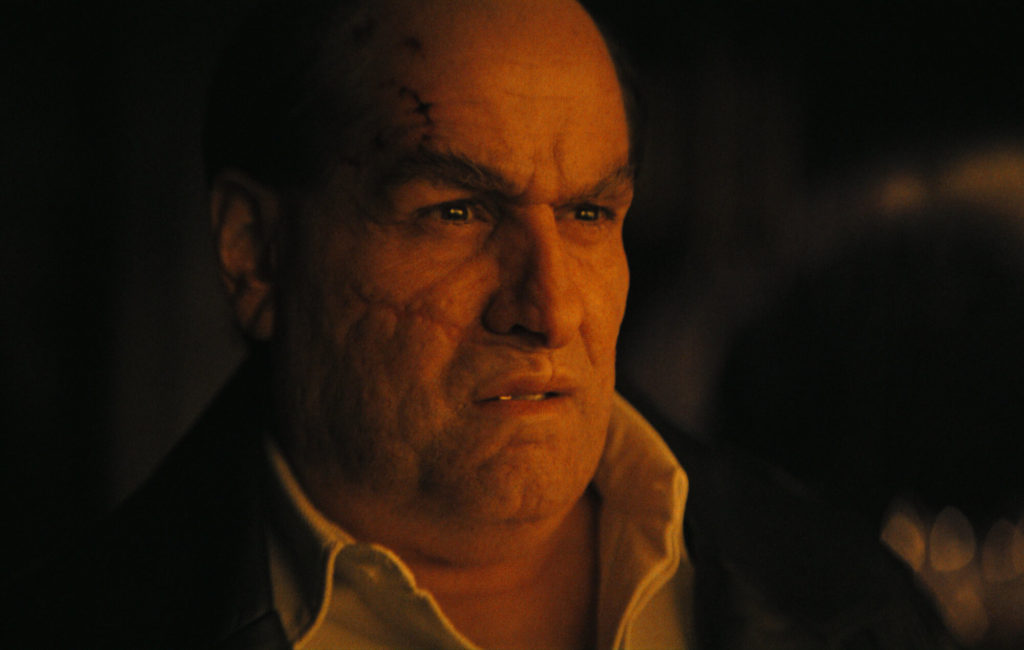
Batman is surrounded by darkness, much of his own creation. But it does not have to be that way.
There is a point in The Batman where Bruce twigs that vengeance is wrong. That he was just feeding this great cycle of darkness and violence. It’s not just an in-universe truth either. Previews and teasers of The Batman had us rolling our eyes at another dark Batman film. Many, myself included, are sick of it. Batman doesn’t have to be all shadows and deaths. We’re not necessarily asking for Adam West (Well, I am).
When Bruce has this revelation, he and the film change. He stops being a figure or fear and literally becomes a light in the darkness, a beacon for the hurt and downtrodden. In the film’s climax, we see him hold a woman’s hand as she is taken away on a stretcher. At this point, the audience knows that he is no longer Vengeance. He is the Dark Knight Detective.
A popular take on Batman is that he does what he does to stop any more children from suffering what he suffered. That’s my favourite take on Batman, and throughout this film, we get confirmation that this is what vengeance has become. Bruce’s sadness at seeing the Mayor’s orphaned son, his disdain while exploring the ruined Wayne Orphanage, his sad realization that Nashton was also an orphan. This is a Batman who has twigged that what he needs to do is save Gotham, and its children, from the darkness.
That’s where Gaiman comes in. Remember him?
Gaiman wasn’t saying that The Riddler, or any character, has to be kitsch or camp or whatever (though that is my favourite Riddler). He can be as dark as you want, but that is up to what you, the writers, and the audience, want. We have had 30 years of dark Batman films because we have been told that is what we want. Many do, a lot of us don’t, I don’t.
One of the penultimate scenes shows Nashton and his joke-telling cellmate in Arkham bonding. They laugh, and like Dano is emulating Frank Gorshin, Barry Keoghan is channelling Caesar Romero’s Joker. These villains are gonna be pals. We have a Batman who is a beam of light in the shadows, and villains who, having failed at mass murder, are last seen laughing and enjoying each other’s company. Hopefully, this is a sign of things to come.
Gaiman’s story ends with the Riddler jumping on a giant typewriter, a classic Batman prop. Having thought it was broken like the rest of his belongings, he is surprised when it types a single question mark.
“HEY! Whaddaya know?” He says,
“Sometimes the OLD STUFF STILL WORKS!”
It sure does. Here’s to a brighter future for The Batman.

